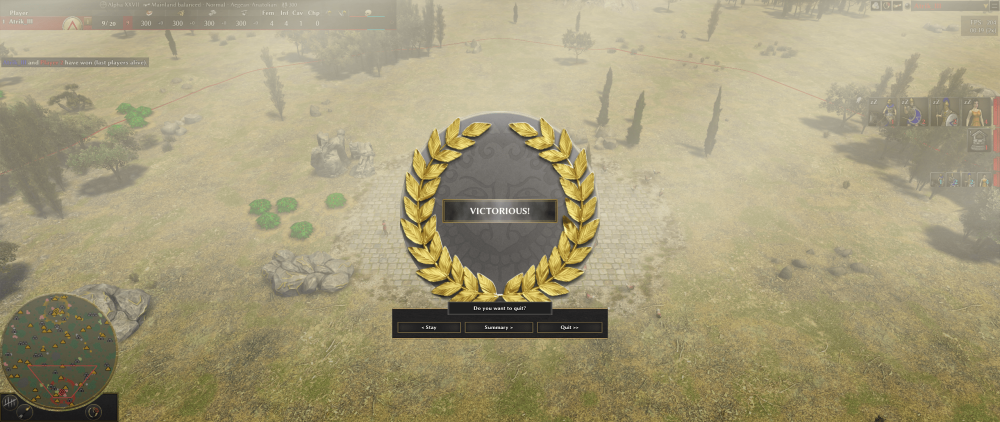All Activity
- Past hour
-
mineral processing flocculant is a vital ingredient in the mining industry, helping to optimize the extraction of valuable minerals from raw ore. At polyacrylamidefactory, we specialize in providing premium it that enhance the efficiency and sustainability of the mineral extraction process. Our products are designed to bind fine particles, facilitating the separation of valuable minerals from waste materials, which results in higher-quality end products and a reduction in overall waste. Flocculation is the process by which small particles, often too fine to be removed by traditional methods, are agglomerated into larger, more easily separable clusters. By introducing mineral processing flocculants into the treatment process, these fine particles—such as precious metals, ores, and minerals—are aggregated into larger flocs. This allows for a smoother and more efficient extraction process, enhancing both the purity and yield of the minerals being mined. We understand the complexity of the mining industry, and we offer flocculants that are specifically engineered to meet the diverse needs of our clients. Our products are suitable for a wide range of mineral processing applications, from the extraction of metals and ores to the treatment of non-metallic minerals. Whether you're working with precious metals, iron ore, coal, or other materials, our flocculants are crafted to deliver superior performance, ensuring the highest standards of efficiency and environmental responsibility. What sets our mineral processing flocculants apart is the consistent quality we deliver. Each batch undergoes a rigorous quality control process to ensure it meets the highest industry standards. We are committed to offering products that are not only highly effective but also environmentally friendly, minimizing waste and enhancing the sustainability of mining operations. Our customers rely on our flocculants to reduce their environmental footprint while maintaining optimal productivity. In addition to our top-quality products, we take pride in our customer-centric approach. We collaborate closely with our clients to understand their unique challenges and tailor our solutions to meet their specific needs. Our dedicated team of experts is always available to offer guidance and support, ensuring that our flocculants are used in the most effective way possible for each individual application. With years of expertise in the industry, polyacrylamidefactory remains a trusted partner for mineral processing solutions. We understand that successful mining operations depend on the efficiency and effectiveness of each component of the process, and our flocculants are designed to make that process easier, faster, and more sustainable. Whether you need a small batch for a specific project or large-scale production for continuous operations, we have the capacity and knowledge to fulfill your requirements. If you are seeking a reliable supplier of mineral processing flocculants, polyacrylamidefactory is the ideal choice. Visit www.polyacrylamidefactory.com to learn more about our products and how we can assist you in optimizing your mineral extraction process.
- Today
-
From https://mod.io/g/0ad/m/shiny, a few small changes were required to make this mod work on released a27. I've ported the endgame screens, added some parts to ModernGUI. Would be too bad to let this artwork vanish in archives. All credits to @maroder obviously.
-
@Stan, I'm with Orange with a LiveBox and I don't share anything.
-
^
-
Du coup c'est les hôtes qui sont mal configurés. Ou toi qui a un CGNat genre Free qui partage ton IP avec 4 personnes. Normalement cependant avec ton setup tu devrais pouvoir host au moins.
-
oh yeah forgot about them, still tho only in temples
-
Hello, The firewall is OK (Public). The logs are OK.
-
sacred bahl infantry left the chat
-
All archer civs should have 220 pop due to their disadvantage if played with regular infantry, particularly carthaginians as they're very limited, no champ infantry and only champ cav through temples.
-
Excellent improvement, also maybe consider the Iberian revered monument, that is only 50 meters as well.
-
Is Historical some mod i ain't aware of? NVM I found it. Doesn't seem to work. Not even showing up as grey on the mod list
-
Wait
-
Introducing the Official community mod for Alpha 26
Arup replied to wraitii's topic in Gameplay Discussion
I played 3 games booming with the comm mod, alone with no enemy. no problems occured. I tried your wall cheapening with the athens cheapening hero and it could certainly change a wee bit about how you play athens, since you could theoretically spam out palisades in about 3 seconds -
yes, he's asking abt the historical context
-
Introducing the Official community mod for Alpha 26
Emacz replied to wraitii's topic in Gameplay Discussion
We have more units in historical that swtich back and fourth. Lead bullet/stone slingers Theracaian Peltasts -
what do you mean? like why did we add it? or how do we use it with kush?
- Yesterday
-
pacificviewent joined the community
-

Introducing the Official community mod for Alpha 26
real_tabasco_sauce replied to wraitii's topic in Gameplay Discussion
We will be able to do a new release soonish but I would love to see more testing and feedback on the current changes. -
https://gitea.wildfiregames.com/0ad/0ad/wiki/GameDataPaths
-
Tu dois pouvoir cocher pour reseau public aussi au cas ou ton reseau soit mal configuré. Sinon tu peux aussi checker les logs du jeu pour voir si l'upnp fonctionne. Sinon il faudra un port vers une ip statique.
-
@Stan, Yes, it's here with the name "pyrogenesis.exe".
-
What are the grounds for poison damage ?
-
Je ne vois pas 0 A.D. dans la liste.
-
Gurken Khan, I speak French. Here is for the firewall : Pour Windows Defender, je ne sais pas.
-
.thumb.jpg.b21ca1d0c15fb56b42c39b25a0a40815.jpg)
Archaeological potpourri
Genava55 replied to Gurken Khan's topic in Introductions & Off-Topic Discussion
https://www.labrujulaverde.com/en/2025/05/evidence-of-the-use-of-a-polybolos-the-mythical-greek-repeating-weapon-at-pompeii-in-89-bce-discovered/ Evidence of the Use of a Polybolos, the Mythical Greek Repeating Weapon, at Pompeii in 89 BCE Discovered A team of Italian researchers has discovered markings on the walls of Pompeii that could be the first known evidence of the use of an ancient and sophisticated weapon of war: the polybolos, a type of automatic crossbow capable of launching multiple arrows without needing to be reloaded, similar to modern machine guns. Its invention is attributed to Dionysius of Alexandria, a Greek engineer who worked in the arsenal of Rhodes in the 3rd century BCE. It wasn’t a crossbow in the traditional sense but used a torsion mechanism based on bundles of twisted sinew, and we only know about it from the description left by Philo of Byzantium, who wrote between 280 and 220 BCE. Philo recounts how one of these weapons was found and provided a detailed description of the gears that powered a chain drive to position bolt after bolt into its firing groove. This is the earliest known application of such a mechanism. The study published in the Nexus Network Journal focuses on a section of the northern wall of Pompeii near the gates of Vesuvius and Herculaneum, where the researchers, led by Adriana Rossi from the University of Campania, found and analyzed small holes in the stones. These marks are square or diamond-shaped and do not match the impact patterns of stones launched by conventional catapults. Instead, they appear to have been caused by arrows or metal projectiles. They appear in groups of four or five, as if the projectiles that caused them had been fired in bursts, something difficult to achieve with handheld weapons or traditional crossbows. The precision and frequency suggest the use of a repeating machine, the researchers assert, believing that they could be the work of a polybolos used during the siege of Pompeii in 89 BCE, when the troops of the Roman general Sulla conquered the city. Although no physical remains of the weapon have been found, the markings on the walls would match its historical description. To confirm their theory, the team used 3D scanning techniques and digital reconstructions. Through virtual models, they calculated the speed and force of the impacts, estimating that the arrows that could have made the marks reached a speed of around 109 meters per second, a rather surprising speed for the time. They also confirmed that the depth and shape of the holes matched models of Roman arrowheads kept in European museums. Why Shoot Arrows at the Walls? But why would the Roman army besieging the city have fired arrows at the stone walls instead of at the defenders? The researchers offer two fairly evident theories. The first is that they simply missed their shots—that is, they were aiming at soldiers on top of the wall but missed, perhaps because the weapon was hard to handle or simply wasn’t as effective as it should have been. And the second is that they were simply testing, practicing and calibrating the polybolos before using it against the enemy. In this regard, an episode of the popular show MythBusters aired in 2010 built and fine-tuned a replica of the polybolos based on Philo’s description, concluding that its existence as a historical weapon was plausible, despite being prone to constant mechanical failures. The team now plans to analyze more sections of the walls of Pompeii and collaborate with museums to cross-reference their findings. They also hope this discovery will attract interest to Pompeii not just as a city frozen in time, but also as a battlefield where Roman military engineering left its mark. SOURCES Rossi, A., Gonizzi Barsanti, S. & Bertacchi, S. Use of Polybolos on the City Walls of Ancient Pompeii: Assessment on the Anthropic Cavities. Nexus Netw J 27, 243–272 (2025). doi.org/10.1007/s00004-024-00803-x Reconstruction of a polybolos. Credit: Diels and Schramm 1919 / AR and archives of Archeotecnica / archeotecnica.com -
What language(s) do you speak? So, that's the router. How about the firewall? And the antivir? I had to set exceptions for 0ad there.
-
Latest Topics






